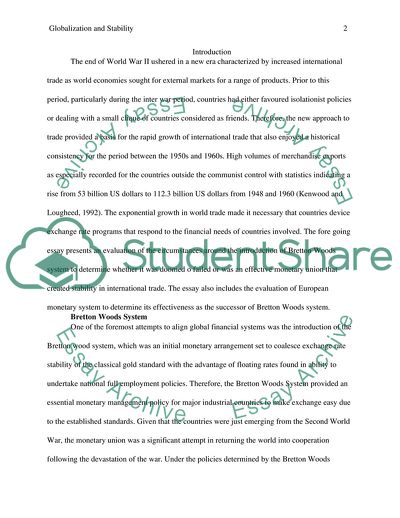Cite this document
(Globalization and Stability: From Bretton Woods to the European Coursework Example | Topics and Well Written Essays - 4000 words, n.d.)
Globalization and Stability: From Bretton Woods to the European Coursework Example | Topics and Well Written Essays - 4000 words. https://studentshare.org/social-science/1854489-globalization-and-stability-from-bretton-woods-to-the-european-monetary-system-was-the-bretton-woods-system-doomed-to-fail
Globalization and Stability: From Bretton Woods to the European Coursework Example | Topics and Well Written Essays - 4000 words. https://studentshare.org/social-science/1854489-globalization-and-stability-from-bretton-woods-to-the-european-monetary-system-was-the-bretton-woods-system-doomed-to-fail
(Globalization and Stability: From Bretton Woods to the European Coursework Example | Topics and Well Written Essays - 4000 Words)
Globalization and Stability: From Bretton Woods to the European Coursework Example | Topics and Well Written Essays - 4000 Words. https://studentshare.org/social-science/1854489-globalization-and-stability-from-bretton-woods-to-the-european-monetary-system-was-the-bretton-woods-system-doomed-to-fail.
Globalization and Stability: From Bretton Woods to the European Coursework Example | Topics and Well Written Essays - 4000 Words. https://studentshare.org/social-science/1854489-globalization-and-stability-from-bretton-woods-to-the-european-monetary-system-was-the-bretton-woods-system-doomed-to-fail.
“Globalization and Stability: From Bretton Woods to the European Coursework Example | Topics and Well Written Essays - 4000 Words”. https://studentshare.org/social-science/1854489-globalization-and-stability-from-bretton-woods-to-the-european-monetary-system-was-the-bretton-woods-system-doomed-to-fail.


